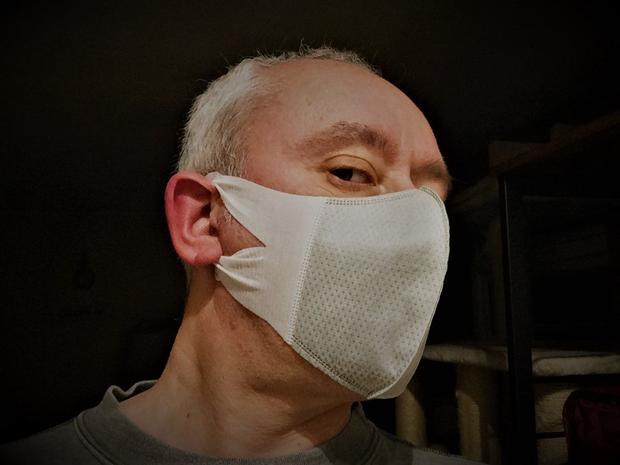Low-tech solution for assessing pathogen air quality

Man wearing a face mask. Image by Tim Sandle.
A popular piece of outdoor equipment and a medical industry staple have assisted Virginia Tech scientists to move closer toward developing a low-tech detection tool for detecting airborne viral illnesses.
While wastewater data can provide an indication of pathogen risk, determining the amount of virus in the air is an important source of information for researchers to collect information to help people to avoid getting sick.
For example, if an individual walks into a cinema, an airplane, a shopping centre, how do
they know if there is sufficient viral particles in the air to a level where they should be worried.
The aim is to detect the virus at very low, realistic levels in a background of tons of other types of particles in the air and do so in a way that does not require heavy, power-hungry sampling pumps that can be hard to use in an occupied space.
The new device can provide the answer within about 15 minutes. To do this, the researchers set the following objectives:
- To collect a large enough air sample without using electricity.
- To transport the sample into liquid – concentrating or enriching the virus to stand out against a background of lots of dust.
- Utilizing antibodies and Raman spectroscopy to provide a structure fingerprint for molecules so they can be more easily identified and hence to detect the virus.
According to lead researcher Christos Stamatis: “The main issue we were having was how can we collect enough air as fast as possible and in a relatively cheap way. The best material we found was the combination of the surgical mask and the dry bag.”
The researchers are seeking to develop a device that can assess the environmental risk of COVID-19 transmission, together with other viral pathogens, in real time. The main challenge has been with successfully capturing the necessary amount of air, filter it, deposit it onto a test strip, and identify virus particles.
Once trapped, the air is squeezed toward a 3D-printed filter holder attached to the bottom of the bag and containing a filter cut out of a standard surgical mask. The filter is then removed and placed in a liquid that contains antibodies and nanoparticles, and the liquid is then dropped onto a test strip, which is analysed by the Raman spectroscopy.
The project is la year or two away from being developed for public use, but the current progress represents a substantial step toward that end goal.
Low-tech solution for assessing pathogen air quality
#Lowtech #solution #assessing #pathogen #air #quality





